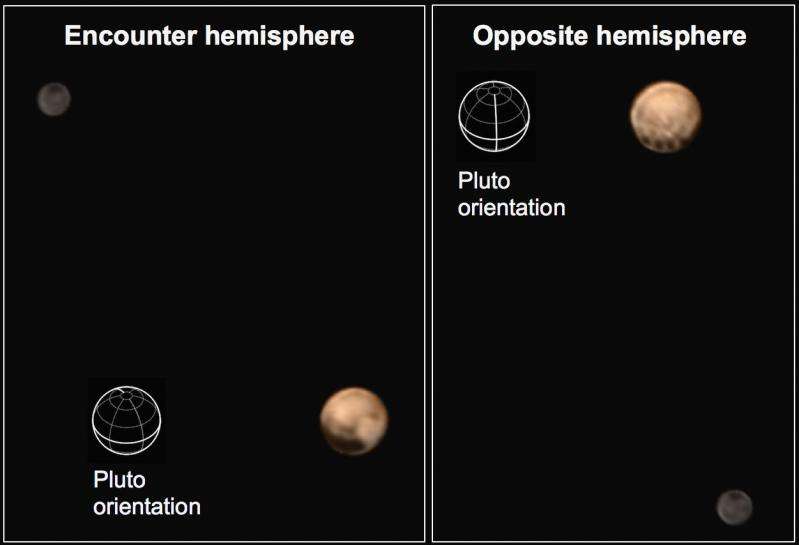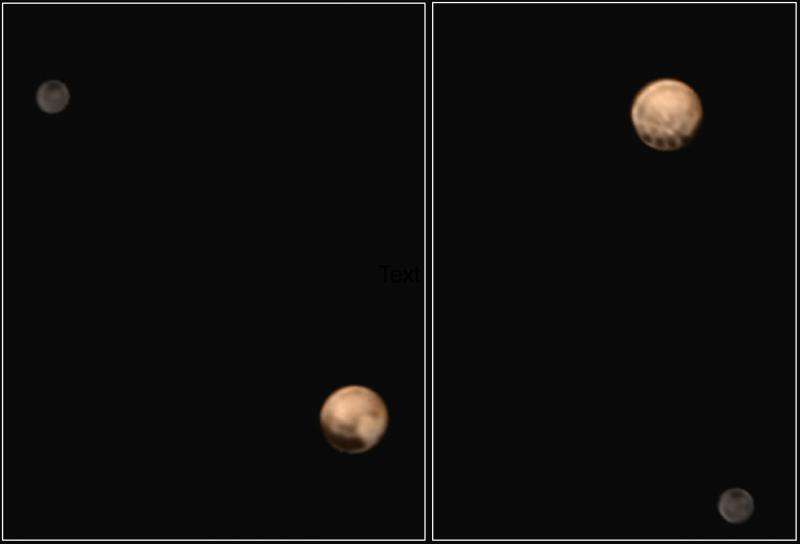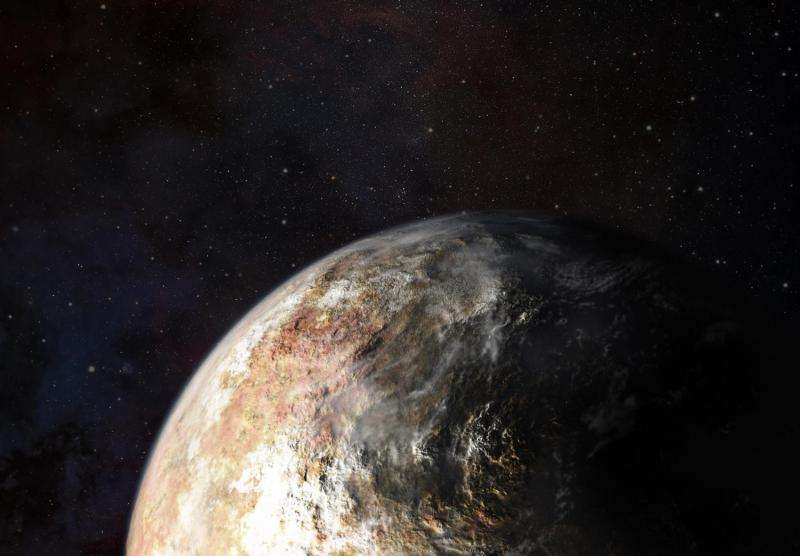New Horizons color images reveal two distinct faces of Pluto

New color images from NASA's New Horizons spacecraft show two very different faces of the mysterious dwarf planet, one with a series of intriguing spots along the equator that are evenly spaced. Each of the spots is about 300 miles (480 kilometers) in diameter, with a surface area that's roughly the size of the state of Missouri.
Scientists have yet to see anything quite like the dark spots; their presence has piqued the interest of the New Horizons science team, due to the remarkable consistency in their spacing and size. While the origin of the spots is a mystery for now, the answer may be revealed as the spacecraft continues its approach to the mysterious dwarf planet. "It's a real puzzle—we don't know what the spots are, and we can't wait to find out," said New Horizons principal investigator Alan Stern of the Southwest Research Institute, Boulder. "Also puzzling is the longstanding and dramatic difference in the colors and appearance of Pluto compared to its darker and grayer moon Charon."
New Horizons team members combined black-and-white images of Pluto and Charon from the spacecraft's Long-Range Reconnaissance Imager (LORRI) with lower-resolution color data from the Ralph instrument to produce these views. We see the planet and its largest moon in approximately true color, that is, the way they would appear if you were riding on the New Horizons spacecraft. About half of Pluto is imaged, which means features shown near the bottom of the dwarf planet are at approximately at the equatorial line.

Instruments Prepare to Search for Clouds in Pluto's Atmosphere
If Pluto has clouds, New Horizons can detect them. Both the high-resolution LORRI imager and the Ralph color imager will be used to look for clouds across the face of Pluto during its approach and departure from the planet.
"We're looking for clouds in our images using a number of techniques," said science team postdoc Kelsi Singer of the Southwest Research Institute, "If we find clouds, their presence will allow us to track the speeds and directions of Pluto's winds."






















